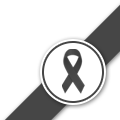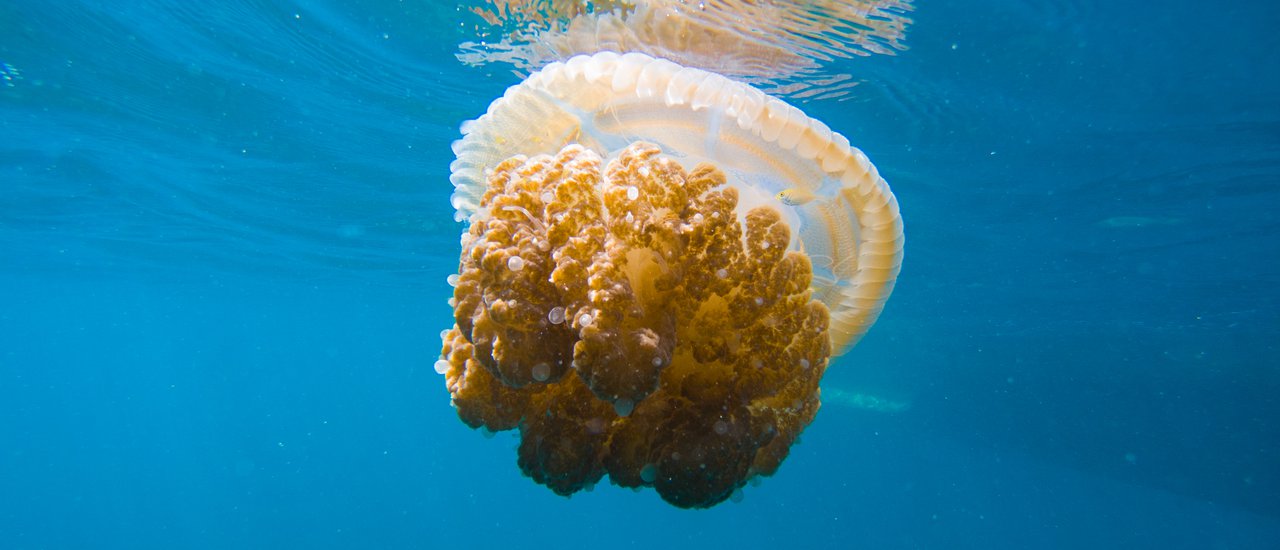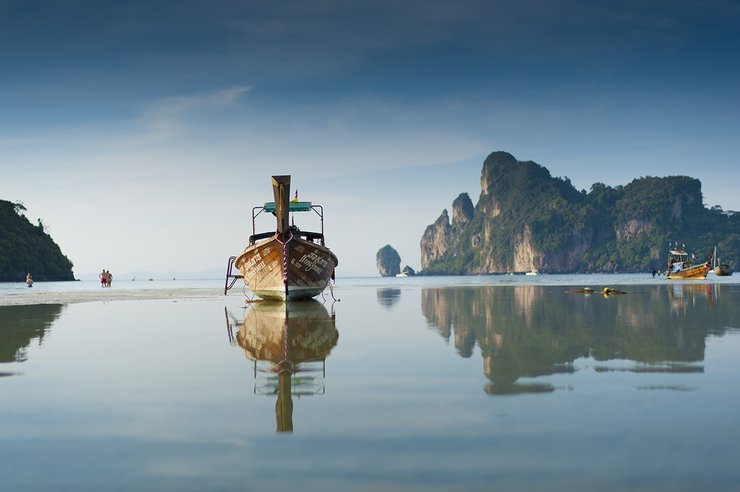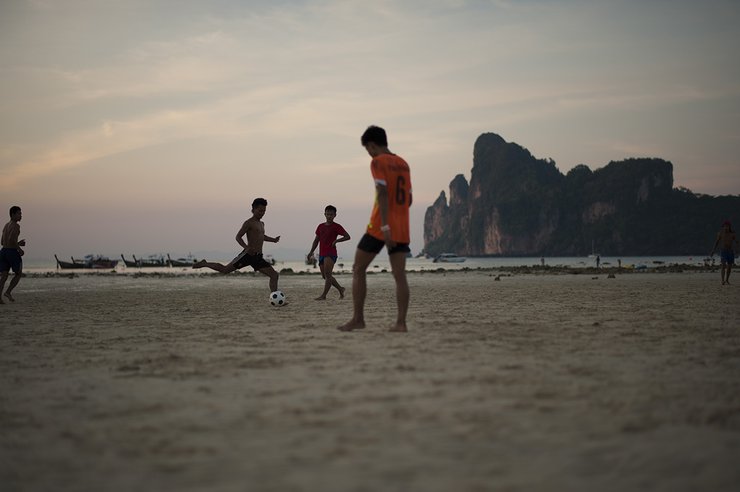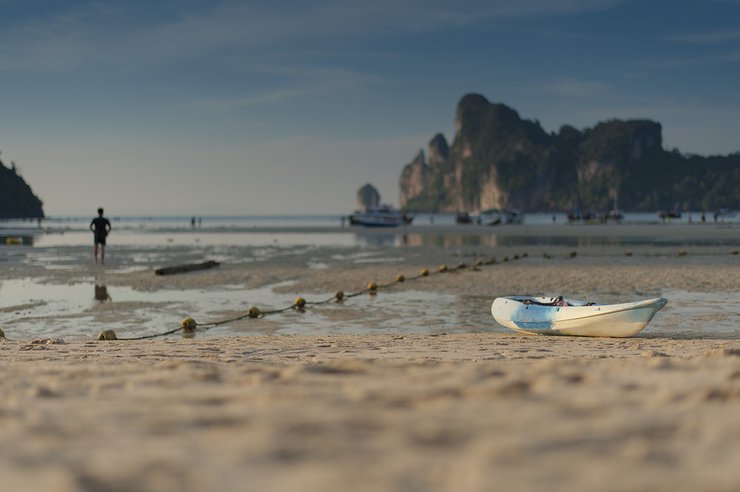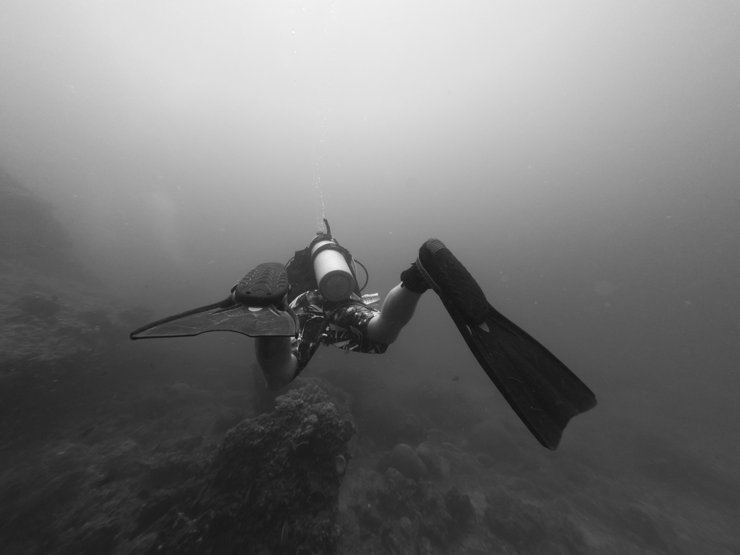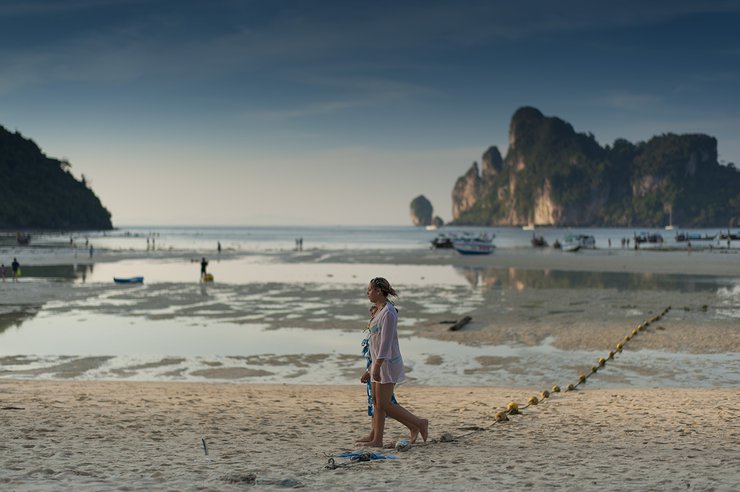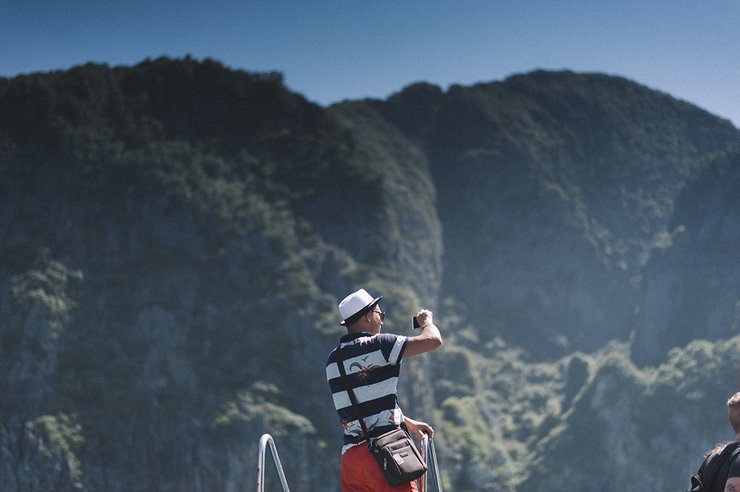5 DAYS : OPEN WATER DIVER COURSE ( P.P. )
Phi Phi Islands: Krabi


This time, we're taking a break from mountains, lakes, and pagodas to enjoy the real sea.
Phi Phi Island is a dream destination for many. When you think of Phi Phi, you probably think of Maya Bay, which is famous all over the world. You can go snorkeling and see small fish and coral reefs.
However, this is just the beginning… a journey that starts with an Open Water Diver course.

The reason I chose to study here is because I had the opportunity to try scuba diving here last year in a course called Discover Scuba Diving. This course involved learning basic theory and then completing two actual dives, without receiving a certification. (The "PADI Discover Scuba Diving" is a half-day option for first-time divers or people without a certification. It's a great adventure and one of our most popular programs. We start by teaching you the basics about diving during a 45-minute lesson in the dive center and then we take you out on our dive boat for two dives. Each dive is up to one hour long and maximum 12 meters deep, of course under direct instructor supervision.) This experience made me want to return and learn more here. I will not mention the name of the diving school in this text.
The OPEN WATER course is a scuba diving course with a depth limit of 18 meters. We need to study approximately 5 chapters of theory, pass 4 quizzes, and take another exam with approximately 40 or 50 questions (I don't remember).
The PADI Open Water Diver certification is the most widely recognized diving license globally and remains valid for life. This certification permits independent diving up to a maximum depth of 18 meters (with a buddy). The course comprises three sections: Knowledge Development (conducted online, through independent study, or in a classroom setting) to acquire an understanding of fundamental scuba diving principles; Confined Water Dives to master basic scuba skills; and Open Water Training Dives to apply these skills and explore the underwater environment.
I learned the theory from videos, and if I didn't understand something, I would look it up in a book. It was easy. However, the videos were in English. I had the opportunity to study with a teacher from Switzerland. I was his first Thai student.
I spent a total of 5 days there... because I was in no hurry. If you have less time, please contact the diving school to see if there are any other options. Most importantly, I stayed there for free. However, there are no rooms for tourists. I slept in the shop after contacting the owner in advance. I brought my own sleeping bag to save money.

Day One
I traveled from Bangkok to Phi Phi Island by a red low-cost airline, booking the ferry at the same time. The price may seem a bit high, but...
... There are taxis and he will give you the boat tickets directly.
Departing from Bangkok around six in the morning, upon arrival at the airport, someone will be waiting with a sign bearing our name. It's exciting to have someone waiting with a sign at the airport. Haha. Then they will take us to the pier and drop us off on the boat.
The vessel we used for our journey was a large ship, likely carrying hundreds of passengers.

It took about two hours to reach the island. We arrived around noon.

Admission fee is 20 baht per person.
After we finished packing, one of the teaching team members asked if we wanted to start the lesson right away. I requested to go eat first and then come back to the lesson.
My learning process began with watching three theoretical video lectures. I then took an open-book exam, where I was allowed to consult reference materials. If I encountered unfamiliar terms, I looked up their translations. However, my teacher advised me not to use Google for this purpose, which I found amusing.
Then complete the three sub-tests and you will be finished with your studies for today.
... We finished work around four or five in the afternoon, so the manager took us for a walk on the beach on the other side of the island.





The first day is over... The food here is around 100 baht per dish. Second Day.
I woke up around 6:30 am today. I actually have to wake up around this time every day because the shop is already open. I can't sleep in.
Today's lesson began with the instructor introducing the names of various diving equipment, their functions, inspection procedures, assembly methods, and selection of wetsuit sizes.

Let's sit down and learn together in a simple way.
The practical exam was held at the pool. The instructor informed us that the pool was located near the pier.
Upon boarding the boat, I noticed a pool that wasn't there before. It turned out to be a beach with buoys for diving. This time, I took three tests.
These are hand signals for clearing water from the mask, removing and replacing glasses underwater, removing and replacing the regulator, indicating air pressure, diving 50 meters with glasses removed, diving once with a specific breath-hold duration, and floating in the water for 10 or 20 minutes. I won't be able to do anything like that.
It's quite tiring.


We will be finished around noon. I am available in the afternoon.
Sleep and relax... Take a walk on the island. That's it for the third day.
Today, we will be conducting OPEN WATER DIVE I AND II, followed by the practical exam for chapters 4-5.
Where can we go for OPEN WATER DIVE I AND II? Somewhere near Bida Island, not far from Phi Phi Don.

The first drive was handed over by Drive (my teacher and buddy) to assemble and check, but for other drives, I had to start doing it myself and checking it myself.
Approaching the first dive site, we donned our gear, checked in with our buddies, and then took the plunge.

Before diving to explore the underwater world, we had to take a test or something, as indicated on the white sheet that Hanning was holding. There were five chapters, similar to the five chapters we had just learned. If I remember correctly, there were five chapters...
After entering the water, we turned around and signaled to the boat that we were okay.

A considerable amount of effort is required. Repeat the process until success is achieved.
In Hanning's hands, there were five white sheets, five chapters.

Then, they began to explore the underwater world.




After completing the first dive, the boat took us to Maya Bay for lunch. We were served watermelon, coffee, and cold water to quench our thirst. After a short break, a jellyfish the size of a basketball floated by. We were hesitant to get in the water, but we eventually decided to take some pictures.




It was a worthwhile decision to go down.
After a long while, they went out for another dive.
Hanning blew it for you to see... When he came up, he said this was the first time he had done it.


After completing the dive, I and another Brazilian student diver had to take another practical exam in the pool. This time, I remember that there was an adjustment to the diving suit by inflating the buoyancy compensator while underwater. We were not allowed to touch the bottom of the pool or float too high. We put on the suit in the water, removed the weight belt in the water, and then put it back on.
Due to security reasons, cameras are not allowed in the pool area during exams. This applies to both students and staff.
Today, we have a limited depth of 12 meters.
We finished around noon and were free again as usual.
Today, we had to wake up early as usual. Before going out for our dive, we had to learn about underwater compass use and dive computer operation. After the lesson, we went out for our first dive, with the destination being around the same area as before.
Every driving session, including today's, begins with a practical driving test.
This time, Hanning has one more student, who is from Brazil.
Upon arrival, we immediately began the test. The swimming test involved taking a single breath at a depth of approximately 4-5 meters and then surfacing. Throughout the ascent, we had to continuously exhale. This breath-hold buoyancy training was challenging, as it required us to control our breathing using only the air in our lungs. The location of the pool itself presented an additional difficulty, making the task even more demanding.
Those who want to know why we need to exhale all the time... should go to school. Haha.


After taking a couple more exams, we went diving to explore the underwater world.




This afternoon, we returned to Maya Bay to rest, just like yesterday. However, there were no jellyfish today.

Do you see the two people floating? They are taking a levitation test from another teacher.

We then returned to the final dive at VIKING CAVE.
Fortunately, we were able to see a turtle here.
It is truly adorable.






Following our return to the boat, one of the instructors announced for those who had successfully completed their diving courses to stand up, and the remaining participants applauded them.
This evening, I will be completing the necessary paperwork to receive my eCard and certification from PADI.
The eCard is valid for 30 days and a certificate will be sent to the address provided. If you have not dived for more than 6 months, you will need to take a refresher course, which also incurs a cost.
The cost of scuba diving lessons on Phi Phi Island is approximately 13,800 baht.
The estimated cost for the flight, taxi, and boat is 5200.
The cost of a meal is approximately 150.
Note: I did not go up to the viewpoint because I already went up there the last time I was here.
DAY FIVE
I had half a day free today because the boat leaving the island was not scheduled to depart until around two in the afternoon. So I spent my time relaxing, walking around, and waiting for the time to pass.
The flight to Bangkok arrived close to midnight due to the late booking, which was chosen for its affordability.


MY SCUBA INSTRUCTOR




The morning atmosphere




Thank you for using a GoPro 5 to capture raw footage underwater.
On land, I use a Nikon D700.
Thank you.
CHAYUTPONG
Friday, October 4, 2024 3:18 PM
